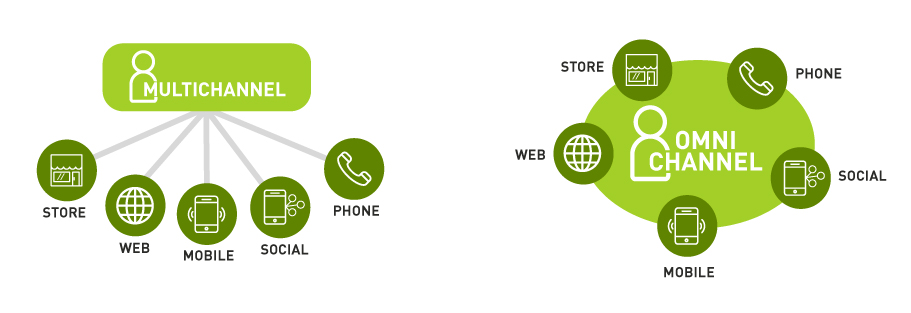
Evolving Convenience Store Channels for Brands: C-Stores In An Omnichannel World
According to the National Association of Convenience Stores (NACS), 21% of c-store operators have recently shifted to curbside pickup, while 14% are focused on drive-thrus. These growing numbers are due to COVID-19 consumer trends and falling fuel sales. NACS describes this as “pushing the industry further into the omnichannel universe.”
Over the past 18 months, an entire industry built on convenience had to work diligently to make itself even more convenient—practically overnight. The addition of delivery services, click and collect, curbside pickup, and changes in store formats, websites, and loyalty programs all had to be executed in months rather than years, and all under steadily decreasing traffic for fuel. Many of the conveniences created and habits formed are expected to stick as increasingly, consumers are expecting brands to operate seamlessly across all retail channels.
In today’s edition of Plain Talk, we’ll talk through the role evolving convenience store channels should play in your brand’s omnichannel marketing plan.
- Multichannel Is So Yesterday
- Do I Really Need an Omnichannel Marketing Strategy?
- Carving Out A Spot For Convenience Store Channels
- Rising Consumer Expectations: 4 Ways to Help Your Convenience Customers
- Get Expert Help Leveraging Convenience Store Channels in Omnichannel Strategy

Multichannel Is So Yesterday
All kidding aside, brands that felt comfortable running a multichannel strategy at the end of 2019 either have already embraced an omnichannel approach or are in the process. What’s the difference?
- Multichannel: The audience is targeted by and can utilize multiple marketing communication choices. However, channels haven’t always been working in harmony due to internal (brand) silos. The multichannel approach enables customers to reach the brand via two or more channels.
- Omnichannel: Simply stated, omnichannel marketing integrates all shopping methods and should deliver the consumer a consistent, convenient shopping experience regardless of the channel they choose to use.
Initially, this may seem a little like semantics, but the level of customer-driven coordination of marketing channels to meet their requirements is real. How many of us (besides 7-Eleven) were talking about c-store online delivery options in 2019?
Do I Really Need an Omnichannel Marketing Strategy?
Conventional wishful thinking as we emerge from the pandemic is that some or all of these dramatic business changes were temporary, reactionary changes to allow us to continue to do business during COVID-19, but omnichannel marketing strategies are not new. IDC Retail introduced us to the term in September 2010. It’s no coincidence that this was just a couple of years after the launch and widespread adoption of smartphones. Initially, the promise of mobile shopping looked like a fantasy, but technology, apps, and peripheral services like delivery and digital network speeds grew rapidly while the massive millennial generation began aging into adulthood and was hungry for newer, faster, and more convenient tech.
In the U.S., 93% of millennials, 90% of Gen X and a whopping 98% of Gen Z adults have smartphones, and the average time spent per adult on mobile devices exceeds 650 minutes daily, according to Pew Research today. That’s nearly seven hours spent on a device where you can buy things. And while mobile is certainly a catalyst for omnichannel changes, smartphones are not the only touchpoints. When you combine the massive amount of time spent on mobile and other potential touchpoints (TV, radio, desktop, retail, etc.) with the forced behavior changes that COVID-19 caused, you see the emergence of these new shopping habits in each channel, many of which are cool and convenient enough that we expect them to stick. So, do you really need to think about your brand in omnichannel terms? Yup. But what role does the convenience channel serve in your omnichannel strategy?

Carving Out A Spot For Convenience Store Channels
Understanding that your product category, price point, target customer, etc. may all impact the fine points of how you may incorporate the convenience channel into your omnichannel strategy, but there are some foundational truths. First, as previously mentioned, an omnichannel strategy is very much about linking digital (e-commerce, loyalty, social, etc.) tools with brick-and-mortar channels while getting brick-and-mortar channels to behave a bit more like digital ones. This is all in the name of frictionless convenience. But to develop an omnichannel carve out in your retail strategy for c-stores, you have to start where you always start.
Start by asking yourself what role each channel, including convenience, plays in your brand ecosystem. If you’ve read this far, we’d guess that your answer for c-stores would include volume (duh), visibility (e.g., shelf awareness) and most importantly, a trial of existing and innovative products. More exotically, if you are a convenience food brand you might consider convenience stores as a competitive blunting tool in the hope of bypassing a grocery trip. Whatever your strategic purposes are for investing in c-stores, let them continue to guide your strategy. Let’s look at two of the biggest roles, trial and volume.
Trial
Many brands rely on c-stores for a trial of their existing products with new users, as well as a trial of product innovation, and more approachable price points, and serving sizes. That won’t change although it’s critical to understand that the drug and grocery channels are dialing their convenience factor way up. Efficient trial opportunities will continue to exist in-store at convenience. Of course, you can encourage trial in other channels as well. Granny sampling at the grocery may be way out of your budget, but what about including a free product sample in grocery curbside pickup orders? Likewise, if you are not actively working out a more aggressive position with key accounts’ loyalty programs and in line with e-couponing programs to promote innovation, now is the time.
Volume
If you’re in the confections business, you know that in 2019 c-stores sold roughly 41% of all candy in the U.S., and according to Information Resources, Inc. (IRI), that figure had dipped that year by 3.1%. The next year, during COVID-19, sales rebounded for chocolate and non-chocolate (mints and gum continued to struggle), but more importantly, according to a recent NCA study, candy buying habits, channel, size, brand, and type all went haywire. While candy saw sales increase in the convenience channel, the huge shift to online grocery shopping led to significant increases in online candy sales.
Smart brands will continue to leverage opportunities created by rapidly changing consumer habits like growing online sales (especially during seasonal periods) but, depending on the product, these habit changes can work in your favor in convenience too. So, brands should continue to develop and promote volume sales packaging, BOGOs, pricing strategies and loyalty program offers to maximize volume opportunities, while making sure that all of their sales tactics are leveraged online and for the convenience of customers.
Rising Consumer Expectations: 4 Ways to Help Your Convenience Customers
One of the business results of the pandemic that is unlikely to be erased is the change in expectations that consumers will have moving forward, especially as Gen Z reaches adulthood. If your brand has a website and is available in a brick-and-mortar store, consumers will expect to be able to click-and-collect their purchase. Period. If you can’t provide this seamless experience, someone else will. Omnichannel requires a significantly more complex and layered digital support system to thrive among your convenience channel partners.
This might be where you correctly remind us that two-thirds of your convenience customers are indies without the sophisticated resources and systems of the big chains. So, what can you do for/with these accounts to help them work within your omnichannel plan? Again, depending on your brand and resources there are a few approaches to consider including:
1. Build a portal hub
Let’s get this one out of the way upfront. It’s a big-ticket item and probably only really efficient for very large brands, but to quote Ferris Bueller (and date myself), “If you have the means, I highly recommend you picking one up.” Current brand portals for indies manage compliance, incentives, promotions, innovation launches, recommended shelf set diagrams, and payments, but imagine a portal that could easily facilitate e-coupon management and other omnichannel tactics. The future is now.
2. Be a category manager
If a portal is not in the cards, consider taking a category captain approach and provide info or tools to your indie convenience partners to teach them how to take full advantage of an omnichannel economy. Consider creating videos that will help these accounts understand the benefits of things like enrolling as a UPS Access Point, or how to effectively use Instacart.
3. Make your old store finder better
Many brands have some kind of “store finder” feature on their website. It uses a Google Maps API key to plot red pins on a map and when combined with mobile location services, it can be very handy in finding a retailer close to me who carries your product. That said, adding delivery, click-and-collect, e-coupons links and other options to your store locator feature (for locations that offer these services) will add incremental consumer convenience while driving store traffic. (Unless you are a beverage alcohol brand. If that’s the case, don’t do this.)
4. Leverage old-school POS
Another simple way to help the indies participate is to create in-store collateral that can drive customers to YOUR digital resources, loyalty program or other digital tools. Once considered on the verge of extinction, QR codes are back and can do an excellent job kicking off a customer’s mobile experience.
Get Expert Help Leveraging Convenience Store Channels in Omnichannel Strategy
Clearly, the retail landscape is trying hard to keep up with revolutionary changes in consumer expectations, and the role convenience and other channels will play in the future is up for grabs. The COVID-19 pandemic has accelerated changes in e-commerce technology by at least five years and creative use of the tools you already have will only get you so far. This means that brands like yours may need to step back and seriously reassess the role each channel plays in your business.
If this Plain Talk article has you clamoring for more info about omnichannel marketing, or you want to discuss how your specific brand might better leverage convenience store channels in your omnichannel strategy, give us a call at 502-499-4209 or drop us a note here, and we’ll be happy to help.
Our Articles Delivered
Signup to receive our latest articles right in your inbox.



